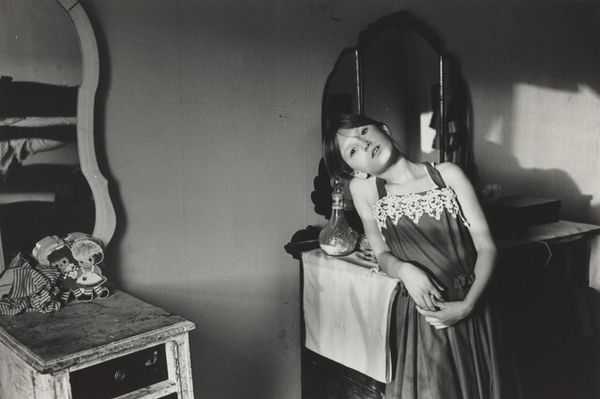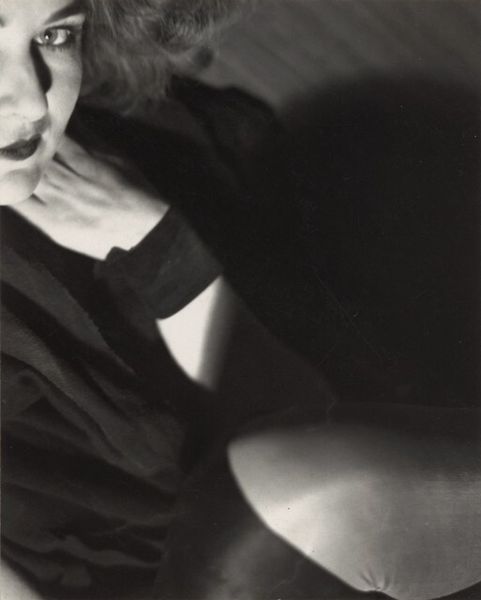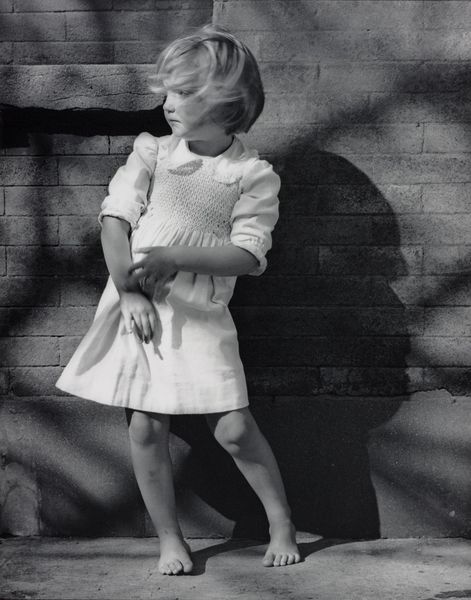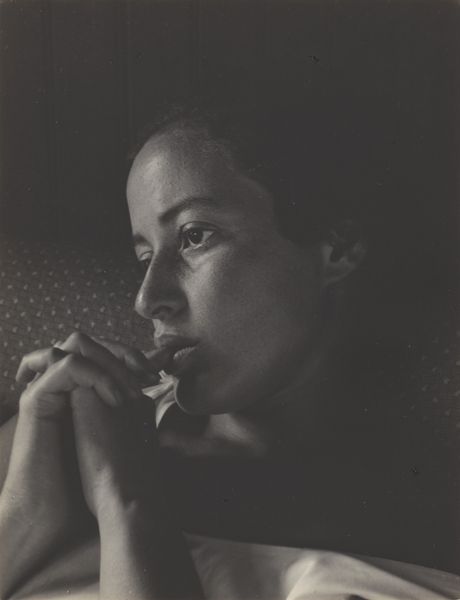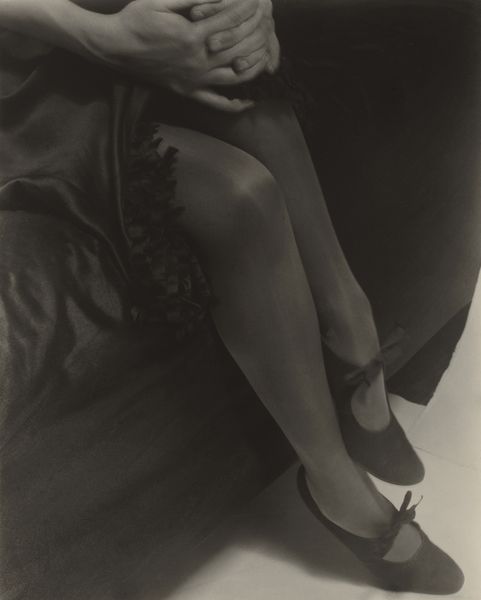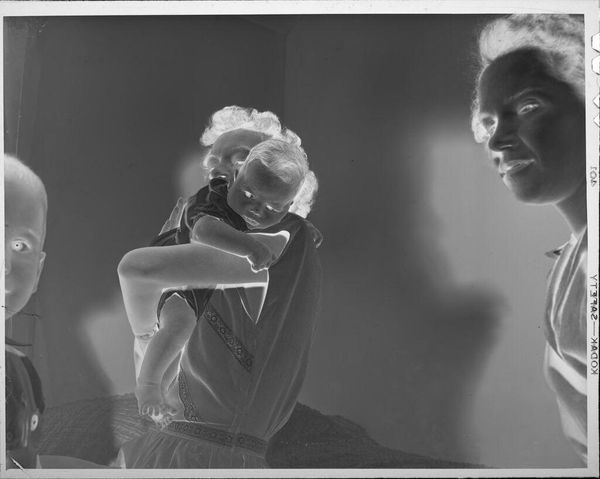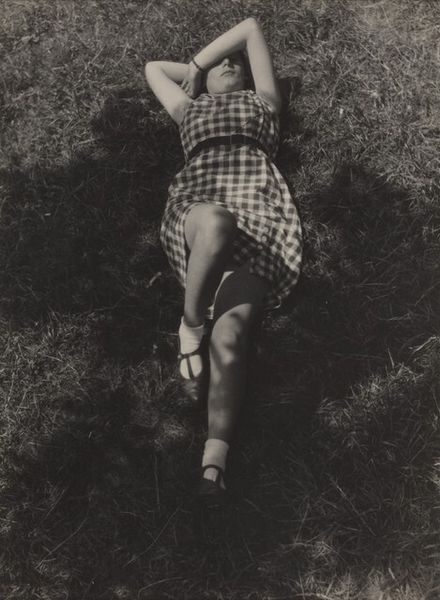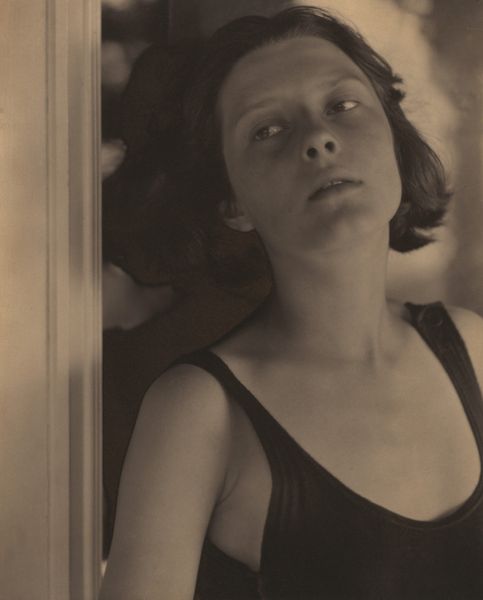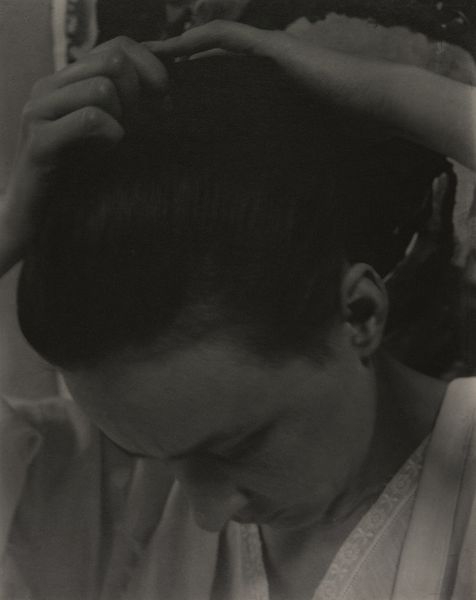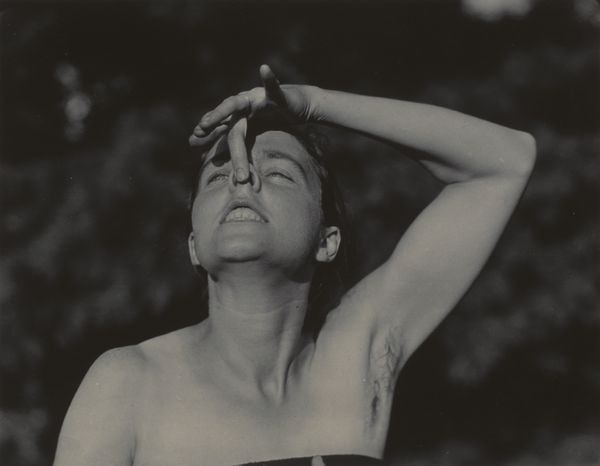
photography, gelatin-silver-print
#
portrait
#
black and white photography
#
black and white format
#
photography
#
gelatin-silver-print
#
monochrome photography
#
realism
Dimensions: image: 30.2 x 45.4 cm (11 7/8 x 17 7/8 in.) sheet: 40.5 x 50.5 cm (15 15/16 x 19 7/8 in.)
Copyright: National Gallery of Art: CC0 1.0
Editor: We're looking at Melanie Eve Barocas's gelatin silver print, "Institute for Blind Children, Port-au-Prince, Haiti" from 1995. The black and white image has a stillness about it, the repeating balustrades lead the eye into the distance, creating a strong linear composition. What do you make of it? Curator: Note the strategic deployment of light and shadow. The high contrast emphasizes textures – the rough hewn balustrade, the girl’s checkered dress, the soft toy. How does the tonality contribute to the emotional weight of the piece, do you think? Editor: It gives it a sense of gravity, a weightiness. The soft toy she’s holding, looks like she's about to kiss it, seems to be her focal point, rather than the outside world. There's a clear visual separation between her and the environment created by the railing and fence, which suggests feelings of confinement, despite being outdoors. Curator: Precisely. Barocas uses formal elements – line, shape, texture – to evoke isolation. Consider also how the perspective draws us to the child but keeps us at a distance. The composition doesn’t invite intimacy, does it? Rather it acts as a window into the state of mind. Editor: No, it really doesn't. I hadn't considered the effect of perspective like that. The window allows the eye to rest in multiple places throughout the frame. This was helpful. Thanks! Curator: My pleasure. Formal analysis allows for deeper connections and interpretations of an artist’s intentions when concerning their aesthetic choices.
Comments
No comments
Be the first to comment and join the conversation on the ultimate creative platform.
